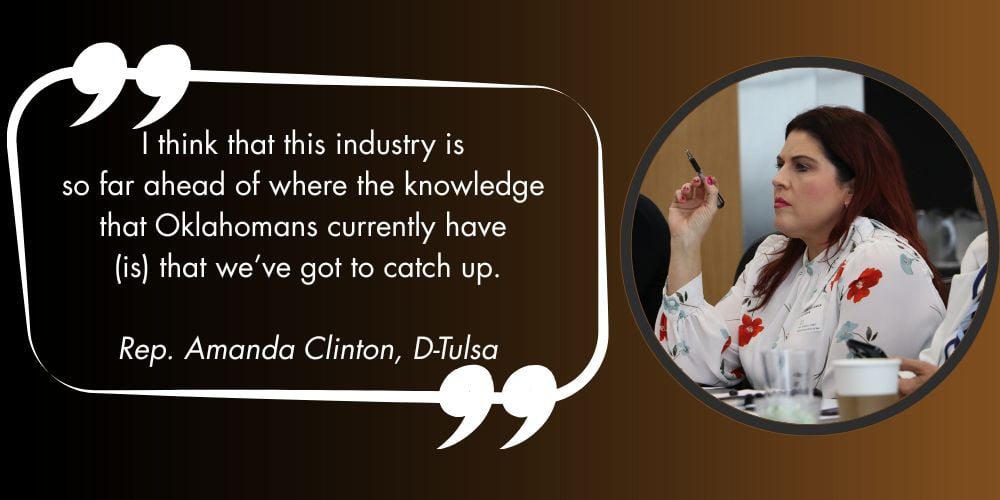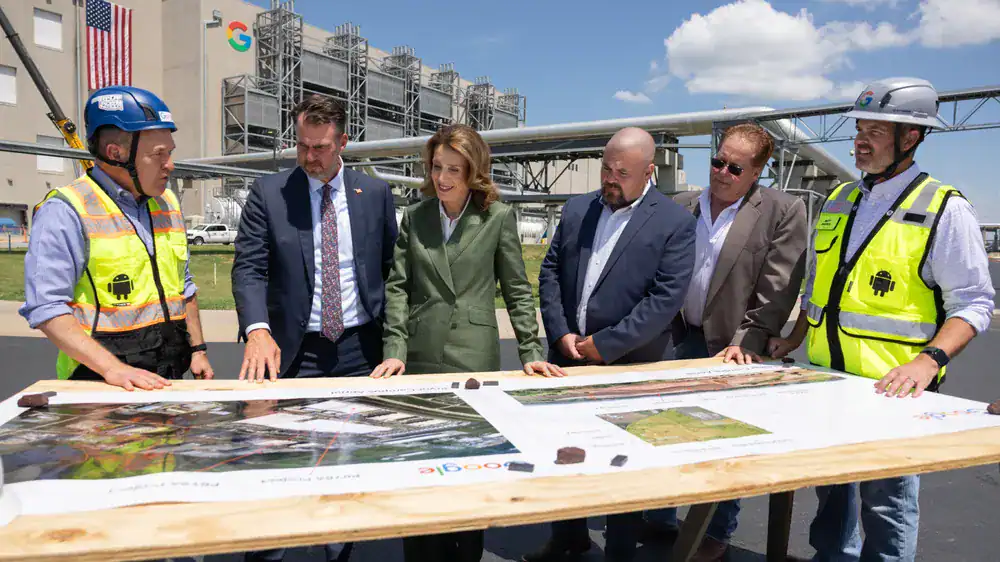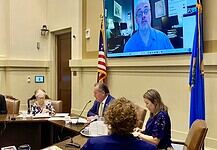Across Oklahoma, officials are courting data centers as sources of new revenue and jobs. But local authorities also keep information private on which companies will run the centers and how much water and electricity they will use.
Republican state leaders have embraced data centers as a way to boost economic development in Oklahoma, but some lawmakers and local residents worry the projects will gobble up water and electricity.
Without better information and education, managing data centers responsibly is more challenging, said Rep. Amanda Clinton, D-Tulsa.
Clinton is hosting an interim study in October to get more information about utility usage at data centers. She isn’t “anti-data center,” but the industry is expanding rapidly, and transparency and public understanding are lagging, she said.
“I think if you ask your average person on the street how much water does a data center use to operate every day or every year, the vast majority of people would say, ‘what’s a data center?’” Clinton said. “I think that this industry is so far ahead of where the knowledge that Oklahomans currently have (is) that we’ve got to catch up.”
Oklahoma has an “abundance of affordable and reliable power” that is attractive to data centers and other industries with high energy needs, said Stacy Smith, vice president of business development with the Tulsa Regional Chamber, in a statement to The Frontier. As companies make initial plans to develop in Oklahoma, water and electricity usage can be seen as numbers that could reveal operational scale, competitive advantages or business strategies, so they choose not to make that information public, Smith said.
Gov. Kevin Stitt has said he wants Oklahoma to be the “high-tech data center capital of the world,” and has highlighted the high number of initial construction jobs and ongoing tech work associated with the projects.
Last fall, city officials in Stillwater called for a vote to approve electric service to future data centers to be run by an unnamed company, as officials were under confidentiality agreements not to disclose the company’s identity. Officials told voters that residential electricity rates wouldn’t go up, and the city had access to enough water for the project, according to a fact sheet put out by the city.
“(Non-disclosure agreements) are common in large economic development projects and were used here to protect proprietary business information and other trade secret information during a due diligence phase prior to consideration of the project in public meetings,” a city spokesperson told The Frontier. The city held stakeholder listening sessions where residents could ask questions, she added.

It wasn’t until August that Google announced it would be running the data center. A city spokesperson said the city does not have a non-disclosure agreement in place on water usage, but couldn’t provide definitives on water needs, though the city has “vetted multiple scenarios and we feel comfortable moving forward.” An estimate told to the Oklahoma State University student newspaper last November put initial water usage at 2.7 million gallons of water a day.
In Tulsa, two data center projects are in the works — Project Clydesdale and Project Anthem. Residents have pushed back against the centers, worrying about electricity rates spiking, low water pressure and environmental issues. It’s not yet known which companies will run the centers.
Some estimates put the peak water use for both of the data centers combined at around nine million gallons daily, according to the Tulsa World. The city of Tulsa did not respond to requests for water usage estimates for the projects and whether any details were still under non-disclosure agreements before publication. Officials have previously said they can meet the water needs of the centers, with a system that can generate up to 210 million gallons of water a day.
When developers and local officials don’t openly share this information, it feels like “they have a lot to hide,” said Nancy Moran, a retired public health nurse and member of the Sierra Club who has been speaking to local officials in Tulsa about the data centers.
Earlier this year, lawmakers approved “behind the meter” legislation that allows companies to build off-the-grid power plants. The goal was to bypass the sometimes-slow regulatory process needed to hook up new connections to the power grid and keep projects with large-scale energy needs from raising prices for local ratepayers.
But data centers aren’t required to build their own power plants. So far, only a project announced earlier this year in Chickasha would have a new industrial park with its own data center and power plant.

Republished under Creative Commons license from The Frontier, a nonprofit newsroom that produces fearless journalism with impact in Oklahoma. Read more at www.readfrontier.org.
Free Press publishes this report as a collaborative effort to provide the best coverage of state issues that affect our readers.
Kayla Branch is a reporter for The Frontier covering the Oklahoma Capitol, state government, and state issues. To contact Kayla write to kayla@readfrontier.com or call 405-274-5430.










